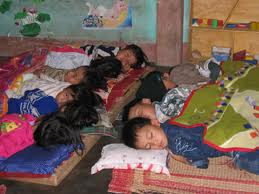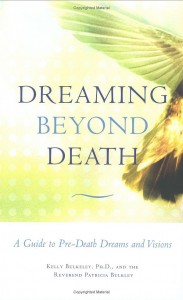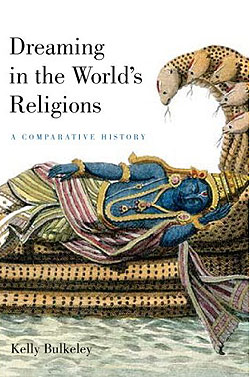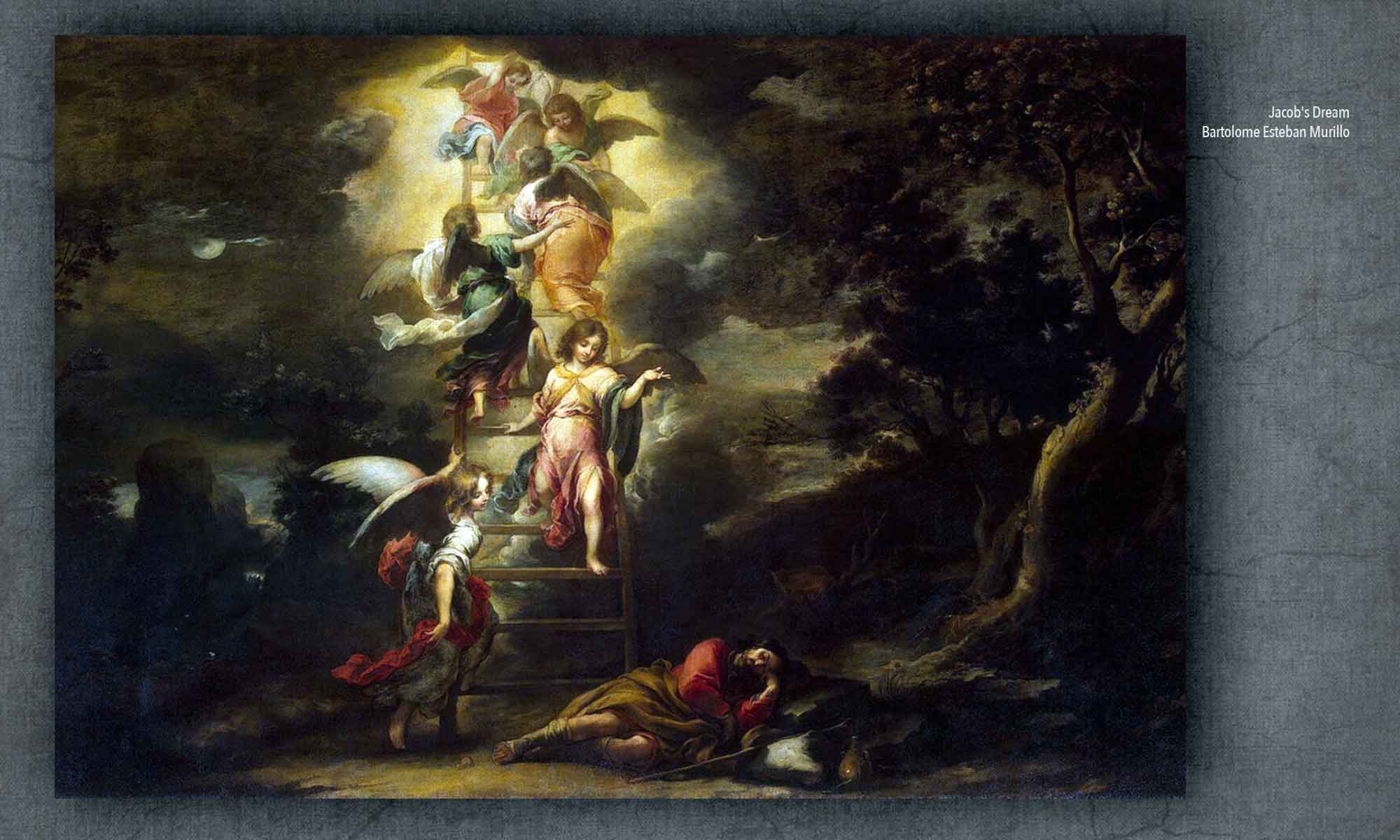This is an article I wrote with Tracey Kahan, Professor of Psychology at Santa Clara University in Santa Clara, California that examines the dream journals of twenty-one college students in the fall of 2001 for evidence of influences from the terrorist attacks of 9/11.
Review of “Dreaming in the World’s Religions”
Here is a review of my book in the journal History of Religions, August 2010, volume 50, number 1, pp. 107-108, by Kimberley C. Patton of Harvard Divinity School.
History of Religions review of “Dreaming in the World’s Religions”
Seeking Patterns in Dream Content: A Systematic Approach to Word Searches
Children’s Dreams: A Word Search Analysis (part 1)
 I’ve just begun a new project using word search methods to study dream reports from children and adolescents. I thought that showing in real time the steps of my analytic process might help other people learn how to apply these methods to their own dream studies.
I’ve just begun a new project using word search methods to study dream reports from children and adolescents. I thought that showing in real time the steps of my analytic process might help other people learn how to apply these methods to their own dream studies.
Any research project starts with a question. In this case my question was about “big dreams” in childhood (the subject of a book-in-progress). I wanted to know more about recurrent patterns in the dreams that children and adolescents remember most vividly. Other researchers like David Foulkes have studied normal, average dream patterns in children, but my question focused on the distinctive features of highly memorable dreams in the early stages of life
Earlier this spring I contacted Harris Interactive, an opinion research company, regarding their “YouthQuery” survey, which enables a researcher to ask a single question and receive online answers from @1000 American children ages 8-18, along with a few other demographic data points. (The cost of this survey, while considerable, was no more than I’ve paid research assistants to help with other projects in the past.)
There are pros and cons to online surveys. On the downside, it’s impossible to validate a person’s answers, and it favors participants who are educated and affluent enough to use computers. On the upside, participants can give their answers in a private setting in their own words, which is extra valuable for a word search approach.
I try not to let excessive angst about methodology slow me down. Every study has its limits. Once you’ve identified them, you move on and do the work. I’m more interested in discovering what a method can do rather than dwelling on what it can’t do.
The Harris people and I decided to word the survey question as follows:
“We are interested in hearing about a dream that you had and remember a lot about. Please try to tell us everything you remember about the dream, including where you were, who else was there, what happened, how you felt, what you were thinking during the dream and how it ended. Please also tell us about how old you were when you had the dream.”
The other questions asked in the standard YouthQuery survey regarded age, gender, race/ethnicity, current grade in school, school location (urban, suburban, rural), and school type (public, private, parochial).
Harris conducted the survey in early April, and then I uploaded the info (thanks to Kurt Bollacker) into the sleep and dream database (SDDB). The dream reports and answers to the other questions can be seen at:
Making this information publicly available enables others to check my work and test my claims, always a good thing in empirical research. More importantly, it allows other researchers to explore facets of the data beyond what I or any single analyst can pursue.
Dream researchers have operated for too long with isolated sources of data that never receive more than one investigator’s systematic attention. Digital databases can help our field move forward into a more dynamic and collaborative future.
Dreaming Beyond Death: A Guide to Pre-Death Dreams and Visions (2005)
 Dreaming Beyond Death: A Guide to Pre-Death Dreams and Visions (2005)
Dreaming Beyond Death: A Guide to Pre-Death Dreams and Visions (2005)
By Kelly Bulkeley and the Rev. Patricia Bulkley
(Beacon Press, 2005)
Purchase this Book – Cloth
Purchase this Book – Paperback
Pre-death dreams and visions have been reported throughout history by people in cultures all over the world. The same is true today, when terminally ill people experience strange dreams in the final days of their lives. These dreams often have a remarkable impact on the dying person: as a direct result of the dream or vision, the person’s fear of death diminishes, replaced by a new understanding of living, dying, and that which lies beyond death. Dreaming Beyond Death combines fascinating stories of contemporary dreamers, the latest scientific research on dreams, and the insights of the world’s religious traditions to provide a simple, spiritually-sensitive approach to understanding these remarkable end-of-life experiences. Written for those who are dying and their caregivers (family, friends, clergy, medical staff), this book is an invitation to discover the surprising potential for personal change and religious transformation that opens up as mortal life draws to a close.
Newsweek Article…
Blurbs and Reviews
“This highly readable volume is a treasure trove of compelling, original insights to excite the mind and the spirit through the journey of dying, healing, and hope. I cannot recommend it highly enough.”
–Rabbi Earl Grollman, author of Caring and Coping When Your Loved One is Severely Ill
“By investigating the metaphor-making power of dreams, this profound book not only bridges life and death, emotion and reason, science and the care of the dying, but the generational difference between this wonderful mother-son team of authors. Dreaming Beyond Death is a great contribution to both science and the challenge of facing death.”
— Don Browning, Professor of Religious Ethics and the Social Sciences and author of Religious Thought and the Modern Psychologies
“In earlier days in Western culture, there existed an Art of Dying. It got lost. Dr. Kelly Bulkeley and Rev. Patricia Bulkley help us recover it. They show how dreams can move us beyond thresholds, carrying us like vehicles into the unknown. Dreams cloak us in almost-understanding and in mystery. They speak to the heart, and whisper us along the implacable path. At a moment when guidance is of the utmost importance, dreams speak. This book makes them accessible. I took up this text just to skim through it and became utterly engrossed, reading every word in one sitting.”
— Robert Bosnak, author of A Little Course in Dreams, Dreaming with an AIDS Patient, and Tracks in the Wilderness of Dreaming
Table of Contents
Introduction
1. Dreams of Mortality
2. The Nature and Meaning of Dreams
3. Journeys
4. Guides
5. Obstacles
6. Care For the Dying
Conclusion
Appendix: Resources for Caregiving for the Terminally Ill
Dreaming in the World’s Religions: A Comparative History (2008)
 New York University Press
New York University Press
July 2008
From Biblical stories of Joseph interpreting Pharaoh’s dreams in Egypt to prayers against bad dreams in the Hindu Rg Veda, cultures all over the world have seen their dreams first and foremost as religiously meaningful experiences. Dreaming in the World’s Religions provides an authoritative and engaging one-volume resource for the study of dreaming and religion. It tells the story of how dreaming has shaped the religious history of humankind, from the conception dream of Buddha’s mother to the sexually tempting nightmares of St. Augustine, and from the Ojibwa vision quest to Australian Aboriginal journeys in the Dreamtime. Dreaming in the World’s Religions offers a carefully researched, accessibly written portrait of dreaming as a powerful, unpredictable, often iconoclastic force in human religious life.
“A pleasure to read, well written and full of fascinating examples. It combines a sensitive and sympathetic understanding of the religious meanings of dreams with a state-of-the-art treatment of the insights that cognitive neuroscience and evolutionary psychology bring to our understanding of them.” –Wendy Doniger, Mircea Eliade Professor of the History of Religions, University of Chicago, and author of Dreams, Illusion, and Other Realities
“Offers a sophisticated, yet easily accessible and engaging discussion of how and in what way dreams and a broad range of the world’s religions have enjoyed mutual influence throughout history. . . . This book is unique in that is provides a valuable resource for the serious scholar of religion, yet has equal potential for non-specialists interested in exploring how their own dreams may find relevance for their own lives, religious or otherwise.” –Nina P. Azari, Editor-in-Chief of the Encyclopaedia of Sciences and Religions
Main findings:
1. Dreams have strongly influenced the beliefs and practices of religious traditions all over the world, throughout history.
Each of the ten chapters of the book is devoted to a different religious tradition (or family of traditions) and its historical teachings about dreams, including Hinduism, Chinese religions, Buddhism, religions of the Fertile Crescent, Greek and Roman religions, Christianity, Islam, and the indigenous cultures of Africa, Oceania, and the Americas. In every case, dreams appear as a powerful medium of transpersonal guidance offering the opportunity to communicate with divine beings, gain wisdom and power, heal suffering, and explore new realms of existence.
2. Dreams and reason are not mutually antagonistic.
Voices of critical questioning and naturalistic analysis have risen up wherever and whenever humans have explored their dreams. It might be a surprise to those who assume that modern scientists were the first to explain dreaming as the mental by-products of sleep, but many ancient traditions recognized exactly the same psychophysiological dynamics at work in people’s dreams. The skeptical perspective did not come after religious perspective, nor even before it. Historically speaking, the two approaches are not mutually exclusive. They have coexisted from the start. The prototypical experiences of dreaming have provoked not only religious and spiritual experience but also a deeply human capacity for rational thought and critical reflection. Dreams have stimulated the power of reason to become increasingly aware of deceptive appearances, hidden connections, subtle perceptions, and cognitively impactful emotions.
3. Dreaming is a primal wellspring of religious experience.
This means that dreams, by virtue of their natural emergence out of the immensely complex, internally-generated activities of the mammalian brain during sleep, offer all human beings a potential source of visionary insight, creative inspiration, and expanded self-awareness. The abundant evidence of cross-cultural history proves that we are indeed a dreaming species. Through dreams humans have discovered the deepest realms of their psyches and grown in awareness of the powerful relational bonds that connect them to their families, communities, natural environments, religious traditions, and ultimately the cosmos itself. Whether dreaming came before religion or religion came before dreaming is an impossible question to answer. But we now have evidence strongly suggesting that the natural rootedness of dreaming in the human brain-mind system makes it a universally available source of experiential awareness of precisely those powers that people have historically associated with religion. To accept that evidence does not mean abandoning science or pledging faith to some religious creed or dogma. Rather, it means acknowledging the reality of an autonomous visionary capacity within the human brain-mind system, a capacity driven by an unconscious intelligence deeply rooted in our biological nature yet continuously striving for transcendent understanding and insight.
4. The pan-human prototypes of dreaming are rooted in the brain, the body, and the evolutionary history of our species.
In almost every known cultural tradition, people have described certain types of intensified, highly memorable dreams (e.g., flying, falling, being chased or attacked, meeting a dead relative, having sex), and I refer to them collectively as prototypical dreams Prototypical dreams are not universal in the sense that every single person experiences all of them. Rather, they are latent forms of dreaming potential. They reflect innate predispositions to dream in certain ways that, when actualized, make unusually strong impressions on waking awareness. In contrast to the vast majority of sleep experiences that fade into oblivion, prototypical dreams are actually quite easy to remember. Some of them are literally impossible to forget, remaining a vivid presence in people’s memories for the rest of their lives.
My basic argument in the book is that highly memorable prototypical dreams have played a powerfully creative role in virtually all the world’s religious and spiritual traditions. The consciousness-provoking impact of dreaming has not been sufficiently recognized by scientists or religious studies scholars, and my hope is to present a compelling case for taking dream experiences more fully into account in the comparative study of religion.
Each of the four prototypes I discuss is clearly associated with a distinct kind of carry-over effect of dreaming experience into the waking state. With sexual dreams the carry-over is a physical orgasm, of both the male and female varieties. With aggressive dreams it’s the hyper-activation of the fight/flight response—extreme fear, racing heart, rapid breathing, and full-body sweat. With gravitational dreams it’s the horribly realistic sensation of falling and waking up with a sudden gasping start. With mystical dreams it’s the blissful, ultra-realistic sensation of flying or the profound joy of being reunited with a deceased loved one. These kinds of direct emotional and bodily continuations of the dreaming experience into the person’s waking life are perhaps the strongest and most easily observed instances of the deeply rooted interplay of dreaming and waking consciousness. The palpable carry-over effects associated with prototypical dreams are clues to the specific processes by which dreaming contributes to healthy brain-mind functioning. Aggressive dreams reflect an adaptive concern with identifying and responding to threats in the waking world. Although emotionally disturbing, such nightmares have the beneficial effect (in survival terms) of stimulating greater waking-world vigilance toward similar threats. The evolutionary logic is simple: the more often and more intensely you dream of various kinds of threatening situations, the better prepared you’ll be to react effectively to those situations if and when they occur in waking life. Likewise with gravitational dreams, which accurately reflect and simulate the existential dangers of entropic destruction. The intense fear and horror generated by these dreams activates the fundamental instincts of self-preservation that must always be ready to respond immediately should a comparable danger arise in the waking world, whether it be falling off something high, getting in a car crash, or losing physical mobility. Sexual dreams prompt the reproductive system and envision a variety of possible ways of satisfying its desires. Their stimulating and taboo-defying effect on the erotic imagination is, I suspect, self-evident to most readers. The impact of mystical dreams is less directly tied to evolutionary biology, and more to the emerging spirit of human creativity. Dreams of the mystical prototype have the effect of enlarging people’s sense of life’s possibilities, expanding their awareness from a narrow fixation on what is to a broader consideration of what might be. Such dreams stretch the mind by pushing it to become more conscious of its own powers and the realities that extend beyond what is immediately present in normal perceptions of the waking world.
